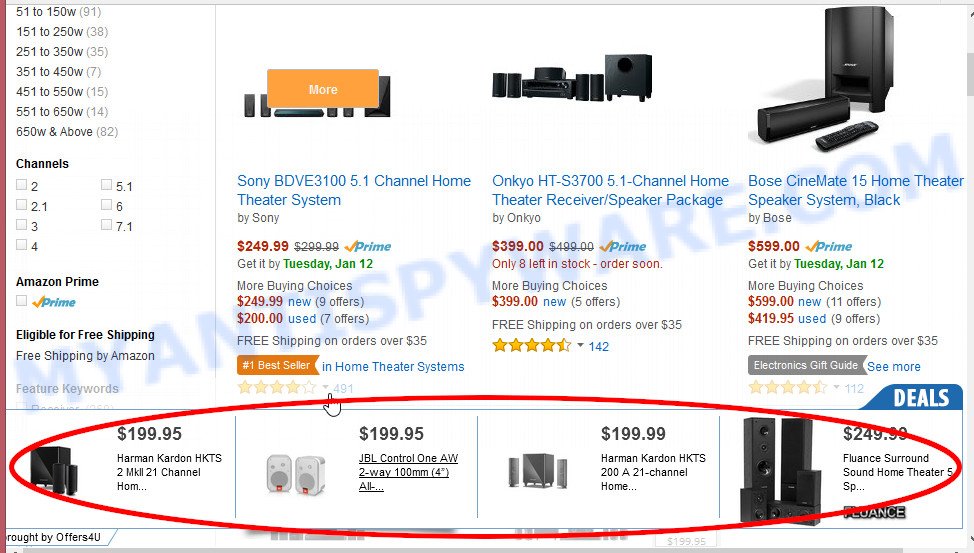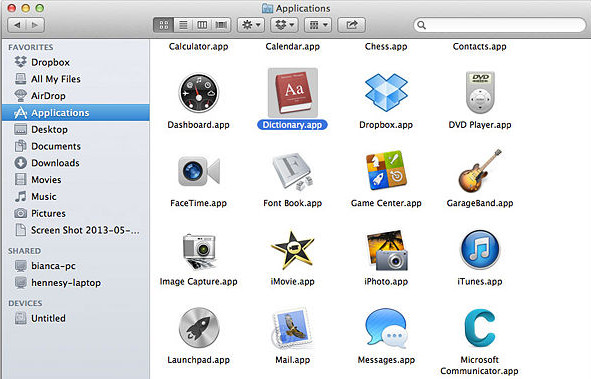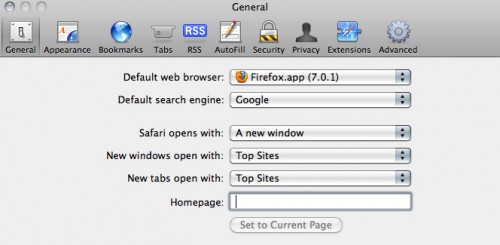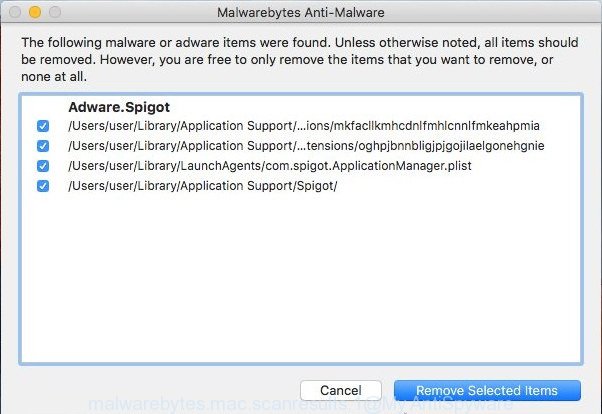ActiveTrack is a potentially unwanted program (PUP) belonging to the adware group. How does adware work? Adware is type of apps developed to inject adverts into your Internet browsing or even desktop experience. Adware software can be created to change your start page, search engine, search results, or even add toolbars to your web browser. Adware run in the background when browse the Web, and adware can slow down your computer and affect its performance.

Unwanted ads
Another reason why you need to get rid of ActiveTrack adware is its online data-tracking activity. It can gather and transmit confidential information without your knowledge. Adware be able to track information about webpages visited, browser and system information, and your MAC system IP address.
Threat Summary
| Name | ActiveTrack, Active Track app/extension |
| Type | adware, potentially unwanted application (PUA), popups, pop up virus, pop up ads |
| Symptoms |
|
| Removal | ActiveTrack removal guide |
How does ActiveTrack adware get on your machine
Many of the free programs out there install unwanted browser toolbars, browser hijacker infections, adware and potentially unwanted apps along with them without your knowledge. One has to be attentive while installing free applications in order to avoid accidentally installing bundled programs. It is important that you pay attention to the EULA (End User License Agreements) and choose the Custom, Manual or Advanced installation method as it will typically disclose what bundled software will also be installed.
Instructions which is shown below, will help you to clean your MAC system from the adware software as well as remove ActiveTrack ads from the Firefox, Safari and Chrome and other internet browsers.
How to Remove ActiveTrack adware
The following steps will help you to get rid of ActiveTrack adware from the Safari, Google Chrome and Mozilla Firefox. Moreover, the guide below will allow you to get rid of malware, browser hijackers, PUPs and toolbars that your MAC system may be infected. Please do the guide step by step. If you need assist or have any questions, then ask for our assistance or type a comment below. Read it once, after doing so, please bookmark this page (or open it on your smartphone) as you may need to close your web browser or restart your Apple Mac.
To remove ActiveTrack, perform the following steps:
- How to manually get rid of ActiveTrack
- Automatic Removal of ActiveTrack adware
- Run AdBlocker to stay safe online
- Finish words
How to manually get rid of ActiveTrack
First try to get rid of ActiveTrack adware manually; to do this, follow the steps below. Of course, manual adware removal requires more time and may not be suitable for those who are poorly versed in system settings. In this case, we suggest that you scroll down to the section that describes how to get rid of ActiveTrack adware software using free utilities.
Delete adware software through the Finder
First, go to the Finder and uninstall suspicious software, all programs you do not remember installing. It’s important to pay the most attention to applications you installed just before ActiveTrack ads appeared on your web-browser. If you don’t know what a program does, look for the answer on the Web.
Open Finder and click “Applications”.

Very carefully look around the entire list of apps installed on your computer. Most probably, one of them is the ActiveTrack adware. If you have many software installed, you can help simplify the search of harmful apps by sort the list by date of installation.
Once you’ve found a dubious, unwanted or unused application, right click to it and select “Move to Trash”. Another method is drag the application from the Applications folder to the Trash.
Don’t forget, choose Finder -> “Empty Trash”.
Remove ActiveTrack adware software from Safari
By resetting Safari web browser you restore your web browser settings to its default state. This is basic when troubleshooting problems that might have been caused by ActiveTrack adware software.
Run Safari browser. Next, select Preferences from the Safari menu.

First, click the “Security” tab. Here, choose “Block pop-up windows”. It will block some types of popups.
Now, click the “Extensions” tab. Look for suspicious addons on left panel, select it, then press the “Uninstall” button. Most important to get rid of all questionable addons from Safari.
Once complete, check your startpage and search provider settings. Click “General” tab. Make sure that the “Homepage” field contains the website you want or is empty.

Make sure that the “Search engine” setting shows your preferred search engine. In some versions of Safari, this setting is in the “Search” tab.
Remove ActiveTrack adware software from Chrome
Run the Reset internet browser utility of the Google Chrome to reset all its settings like start page, default search engine and new tab page to original defaults. This is a very useful utility to use, in the case of web-browser redirects to the ActiveTrack ads.
First start the Chrome. Next, click the button in the form of three horizontal dots (![]() ).
).
It will show the Google Chrome menu. Select More Tools, then press Extensions. Carefully browse through the list of installed addons. If the list has the add-on signed with “Installed by enterprise policy” or “Installed by your administrator”, then complete the following tutorial: Remove Google Chrome extensions installed by enterprise policy.
Open the Google Chrome menu once again. Further, click the option named “Settings”.

The browser will open the settings screen. Another solution to show the Chrome’s settings – type chrome://settings in the web browser adress bar and press Enter
Scroll down to the bottom of the page and click the “Advanced” link. Now scroll down until the “Reset” section is visible, as displayed below and click the “Reset settings to their original defaults” button.

The Chrome will display the confirmation prompt like below.

You need to confirm your action, click the “Reset” button. The browser will start the procedure of cleaning. Once it’s done, the web-browser’s settings including default search engine, newtab page and homepage back to the values that have been when the Chrome was first installed on your Apple Mac.
Remove ActiveTrack from Firefox
The Firefox reset will get rid of redirects to the unwanted ActiveTrack ads, modified preferences, extensions and security settings. Your saved bookmarks, form auto-fill information and passwords won’t be cleared or changed.
First, open the Mozilla Firefox and click ![]() button. It will open the drop-down menu on the right-part of the web browser. Further, click the Help button (
button. It will open the drop-down menu on the right-part of the web browser. Further, click the Help button (![]() ) as shown below.
) as shown below.

In the Help menu, select the “Troubleshooting Information” option. Another way to open the “Troubleshooting Information” screen – type “about:support” in the browser adress bar and press Enter. It will show the “Troubleshooting Information” page as shown on the image below. In the upper-right corner of this screen, press the “Refresh Firefox” button.

It will show the confirmation dialog box. Further, click the “Refresh Firefox” button. The Firefox will start a task to fix your problems that caused by the ActiveTrack adware. When, it is finished, click the “Finish” button.
Automatic Removal of ActiveTrack adware
Best ActiveTrack removal utility should locate and delete adware, malicious software, PUPs, toolbars, browser hijackers, and popup generators. The key is locating one with a good reputation and these features. Most quality programs listed below offer a free scan and malicious software removal so you can detect and uninstall unwanted software without having to pay.
Use MalwareBytes Anti-Malware to get rid of ActiveTrack adware
Manual ActiveTrack removal requires some computer skills. Some files that created by the adware can be not fully removed. We recommend that run the MalwareBytes AntiMalware that are fully free your Apple Mac of adware. Moreover, this free tool will allow you to delete hijacker infection, malicious software, PUPs and toolbars that your computer can be infected too.
Visit the following page to download MalwareBytes Anti-Malware.
21163 downloads
Author: Malwarebytes
Category: Security tools
Update: September 10, 2020
After the download is done, close all windows on your MAC. Further, launch the saved file. Follow the prompts.
The MalwareBytes Anti Malware will automatically launch and you can see its main window as shown on the image below.
Next, click the “Scan Now” button . MalwareBytes utility will begin scanning the whole machine to find out ActiveTrack adware. This process can take quite a while, so please be patient. While the MalwareBytes Anti-Malware (MBAM) is scanning, you can see how many objects it has identified either as being malware.

After MalwareBytes has finished scanning your computer, you can check all items found on your Apple Mac. Review the report and then click “Remove Selected Items” button.

The MalwareBytes AntiMalware will begin to get rid of ActiveTrack adware.
Run AdBlocker to stay safe online
Running an ad-blocking program such as AdGuard is an effective way to alleviate the risks. Additionally, ad-blocker programs will also protect you from malicious advertisements and webpages, and, of course, block redirection chain to misleading and similar web pages.

Visit the following page to download the latest version of AdGuard for Apple Mac.
3882 downloads
Author: © Adguard
Category: Security tools
Update: January 17, 2018
When the download is finished, run the downloaded file. You will see the “Setup Wizard” screen. Follow the prompts.
Each time, when you start your machine, AdGuard will start automatically and stop undesired pop up ads, block harmful or misleading web-sites.
Finish words
After completing the step-by-step guidance above, your MAC should be clean from this adware and other malicious software. The Firefox, Safari and Chrome will no longer open the ActiveTrackads when you browse the Internet. Unfortunately, if the guide does not help you, then you have caught a new adware software, and then the best way – ask for help.
Please create a new question by using the “Ask Question” button in the Questions and Answers. Try to give us some details about your problems, so we can try to help you more accurately. Wait for one of our trained “Security Team” or Site Administrator to provide you with knowledgeable assistance tailored to your problem with the ActiveTrack adware.



















